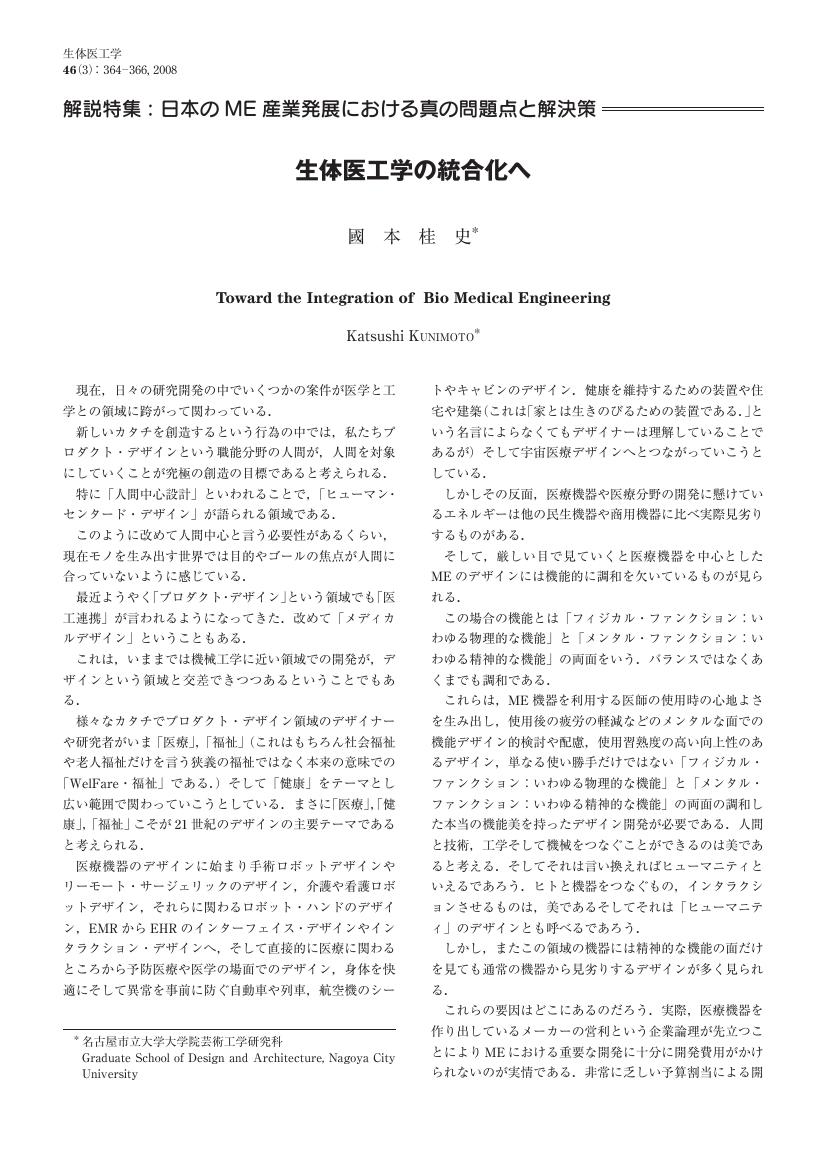1 0 0 0 OA 生体医工学の統合化へ
- 著者
- 國本 桂史
- 出版者
- 公益社団法人 日本生体医工学会
- 雑誌
- 生体医工学 (ISSN:1347443X)
- 巻号頁・発行日
- vol.46, no.3, pp.364-366, 2008-06-10 (Released:2008-10-31)
- 著者
- 加藤 陽子 姫野 龍太郎
- 出版者
- 社団法人日本生体医工学会
- 雑誌
- 生体医工学 : 日本エム・イー学会誌 (ISSN:1347443X)
- 巻号頁・発行日
- vol.41, no.2, pp.115-121, 2003-06-10
- 被引用文献数
- 2
MRI angiography is useful for the diagnosis of blood vessels and blood flow. The phase contrast method is suitable for quantitatively evaluating blood flow velocity because it is reflected in the phase. However, the velocity is low near the vessel wall, and the effect of the dephasing cannot be ignored in this region. On the other hand, the vessel wall is static and the effect of dephasing could be weak. The maximum velocity in the blood vessel also seems to be an accurate parameter because of the weak effect of dephasing. The static and maximum velocity regions therefore seem helpful for extraction of the vessel region, although the influence of the relaxation times and sequence parameters on dephasing have not yet been clarified. In this study we investigate the effects of these parameters on the measurement accuracy of the velocity and design a simple method for the regional extraction of blood vessels. The relaxation times, T_R, T_E and VENC, influenced the accuracy of velocity measurement. Although no dominant parameter was found among them, several combinations of parameters resulted in a significant difference in accuracy. The standard deviation of the phase in the static region increased with increasing relaxation time. We also extracted the popliteal artery region by growing the region until the phase reached a threshold value. This threshold value was set based on the standard deviation of the area in a static region. This method was found to be suitable for extracting the blood vessels from MR images obtained when using the phase contrast method.
- 著者
- 藤原 義久 冷水 一也 源野 広和 松浦 英文 安田 昌司 飯田 健夫 牧川 方昭
- 出版者
- 公益社団法人 日本生体医工学会
- 雑誌
- 生体医工学 (ISSN:1347443X)
- 巻号頁・発行日
- vol.43, no.1, pp.162-171, 2005 (Released:2007-01-19)
- 参考文献数
- 20
This paper describes the development of a sensor incorporating an algorithm that estimates the quality of comfortableness by measuring peripheral skin temperature, pulse, and galvanic skin response (GSR) that reflect autonomic nervous system activity. A correct answer rate of 83% was obtained between the subjective comfortableness and the estimated comfortableness by the developed sensor. For the application of this human feeling sensor, we used it to estimate the comfortableness of subjects receiving massages, then developed two alternative adaptive massage control procedures based on the sensor's estimate, and verified the effectiveness of the results through testing the subjects. We observed that in course A (dynamic comfortableness) the peripheral skin temperature dropped and the GSR and pulse rate increased, while in course B (static comfortableness) the peripheral skin temperature rose and the GSR and pulse rate dropped. By the end of the control sequence, there was a statistically significant difference in the amounts of change in both the peripheral skin temperature and the GSR between the two sequences (p < 0.05). To examine the effects of each course more closely, we mapped the trajectories of physiological change during the control sequences of each course at twentysecond intervals, and the results correlated closely with the subjective assessments. These results suggest that bio-control adapted to comfortableness is feasible.

